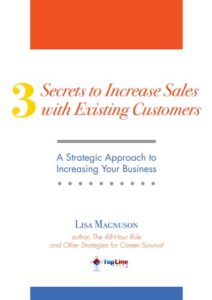The sales process is one of the most important parts of achieving successful sales performance. Too often, companies are resistant to adopt it as a dynamic process that integral to how a company does things. Lisa Magnuson, interviewed by John Golden, explores the resistance to sales processes, and how to make a sales process great.
This expert sales interview discusses:
- The importance of having a sales process
- What a sales process isn’t
- The benefits that a sales process has on retention
The Importance of a Sales Process:
A sales process is vital to any sales organization. Sales leaders need to be more encouraging of their sales team to utilize this essential tool. “Build your sales process based on best practices. Make it front and center, so it is incorporated right into the CRM. This makes it so salespeople are constantly seeing where they are at each stage of the funnel, what should they be doing, and when they have done all of the things required to go to the next stage,” said Magnuson. A sales process is also essential because it helps salespeople see what tools are available for them to use and what customers typically need at each stage. Plus, everything is front and center and easily accessible.
What a Sales Process Isn’t:
Organizations that have a defined process of sales stages, and defined activities within those sales stages, outperform other organizations. And yet, there’s a certain amount of resistance to fully adopting these processes. This is in part because salespeople and most sales leaders resist the science of selling in favor of the artistic and creative side of selling. However, it’s important to look at what a sales process isn’t. When you look at what a sales process isn’t, you see that it’s not inflexible, it’s not a set of scripts, or a one size fits all type of plan. Realizing and understanding this helps salespeople feel more comfortable, knowing that they can put their personalities and unique situations into a proven framework. “The key is for leadership to set the expectations as to what the sales process is going to do for the sales organization, and to sell salespeople on the benefits,” said Magnuson. “By understanding what it’s not, you address the salespeople’s fears and concerns. If you do that at the beginning and the middle and continually reinforce it, you’re going to get compliance and start to build a winning culture built around a process that can be replicated.”
Onboarding Benefits:
There are also a lot of benefits to having a structure sales process concerning hiring and onboarding new salespeople. The turnover rate in the sales world is much higher than in other jobs in the business world, in part because it is difficult to train and orient salespeople to the company’s way of functioning and doing things. Having a sales process increases retention because new employees fall right in line with the best practices according to the sales process, and create good habits from the beginning. They’re going to be more successful, generate more revenue for the organization, and be less likely to want to switch jobs or companies.
About our Host:
John is the Amazon bestselling author of Winning the Battle for Sales: Lessons on Closing Every Deal from the World’s Greatest Military Victories and Social Upheaval: How to Win at Social Selling. A globally acknowledged Sales & Marketing thought leader, speaker, and strategist. He is CSMO at Pipeliner CRM. In his spare time, John is an avid Martial Artist.
Pipeliner CRM empowers sales organizations to totally optimize their sales process. Get your free trial of Pipeliner CRM now.











Comments